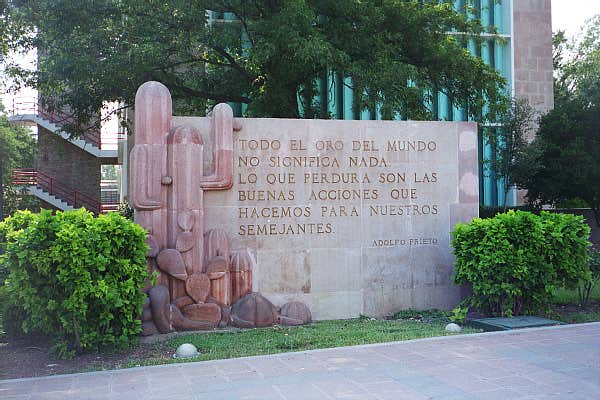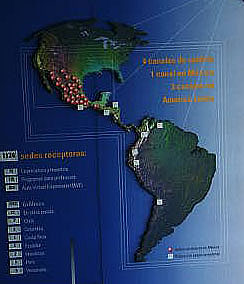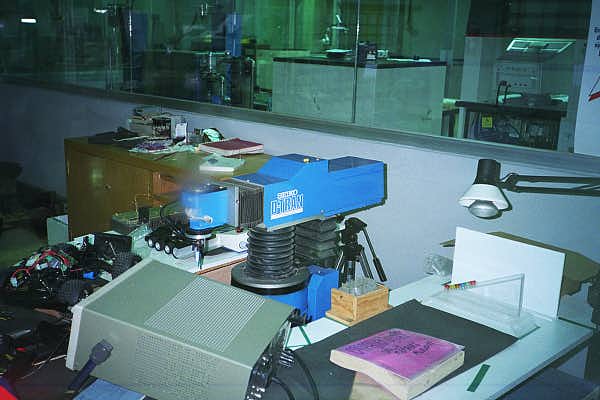A clear mission was evident in everyone with whom we spoke. Their President decreed the direction of the university and each person knew what portion was their responsibility.
Among these goals is international competitiveness. Each DL instructor is entitled to ask one appropriate expert from anywhere to speak to their class. (An office makes the arrangements). That persons presentation is also broadcast to the campuses of ITESM. All faculty are expected to have an international experience and internationalism is part of the curriculum.

The text of this sign translates as: "All the gold in the world doesn't mean anything. That which will endure are the good actions we do for our fellowman."
Technology Building.
ITESM, a private school, was founded to educate Mexico's best. Their students are required to take a course in leadership and now many are in positions of authority in the country.
Part of ITESM's mission is democracy and improving education. They offer leadership training to city officials and now to federal officials. They are also beginning Web-based instruction to bring the education of public school teachers to a graduate level.
They also offer a course to DL students on how to be a successful DL student.

Squares and red dots on this map of the Western hemisphere, show the satellite classrooms which occur from Peru to Mexico. They often teach in English because they cover so many countries.
ITESM has a dean responsible for public relations. He has a staff of about 12 who conduct needs assessments to select courses to be offered and then advertise appropriately.

The best instructors from among their 7,000 faculty is chosen to teach via satellite. Every ITESM instructor is expected to complete some 460 hours of training, from specific presentation skills to uses of various technologies. Instructors also receive a laptop when the training is complete and base pay is increased. It is considered a certification. When they are selected to teach a DL class they are assigned an instructional designer. The designers completes a 300 hour program.

Satellite Classroom. Seats are positioned facing two large monitors. A podium with document camera is on the left and a camera faces the classroom to pick up student images.
The robotic arm in this picture is equpped with a camera and students can manipulate the arm over the Internet.
The doctoral level professor is directly responsible for the first 100 students enrolled in a course (1 satellite course counts as 2 face-to-face courses). A masters level person is hired for each subsequent 50. Courses may have several hundred or even several thousand in them. ITESM knows what enrollment they need to cover the costs of producing a high quality course.

New friends: A group portrait of the WKU and ITESM teams.
Life-long learning is clearly a part of the ITESM culture. It seemed like everyone we met was working on a second master's degree or doctorate. ITESM explicitly expects continuing professional development as part of employment. All faculty are expected to have at least 40 continuing education hours per year. They do not have a tenure system.
